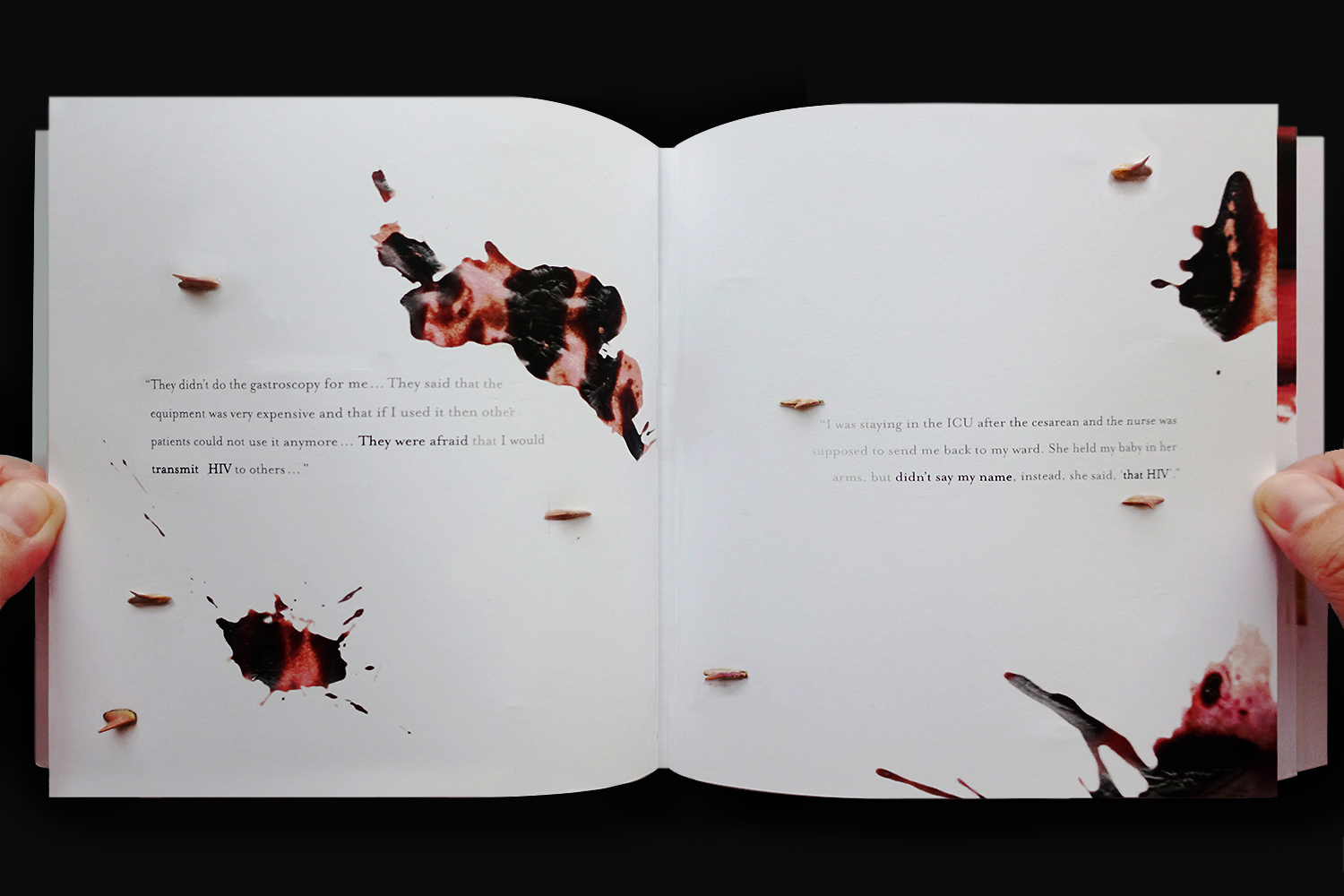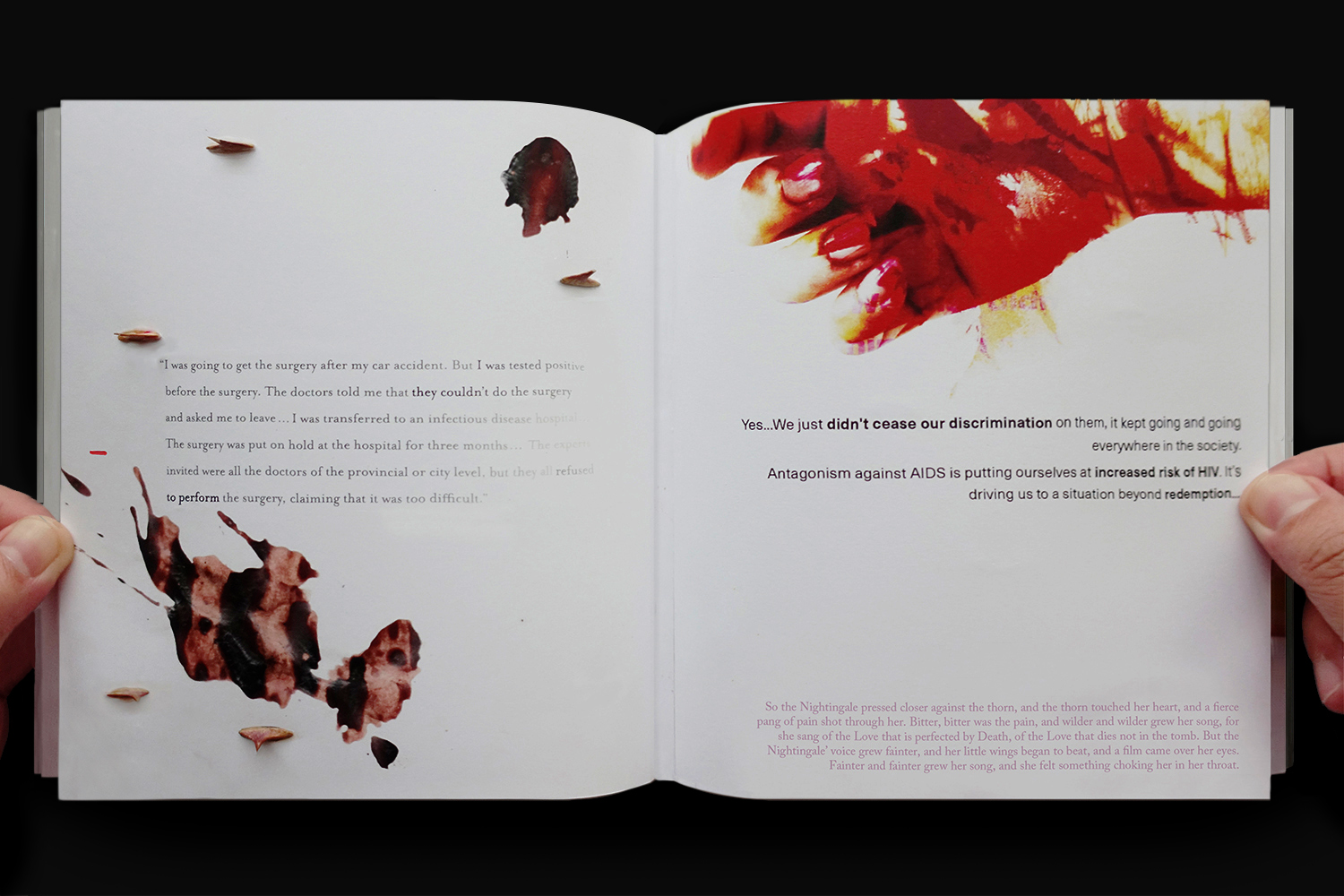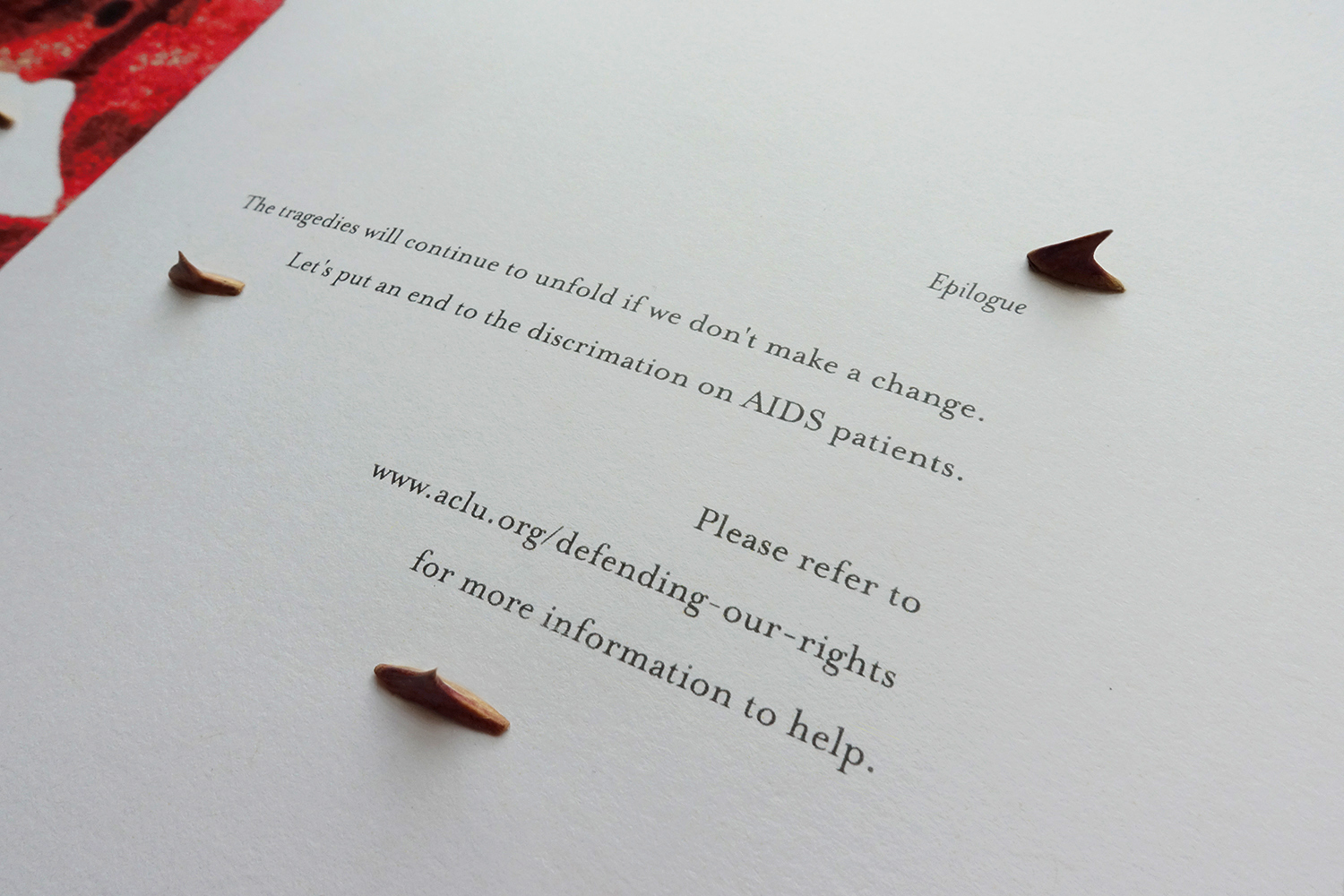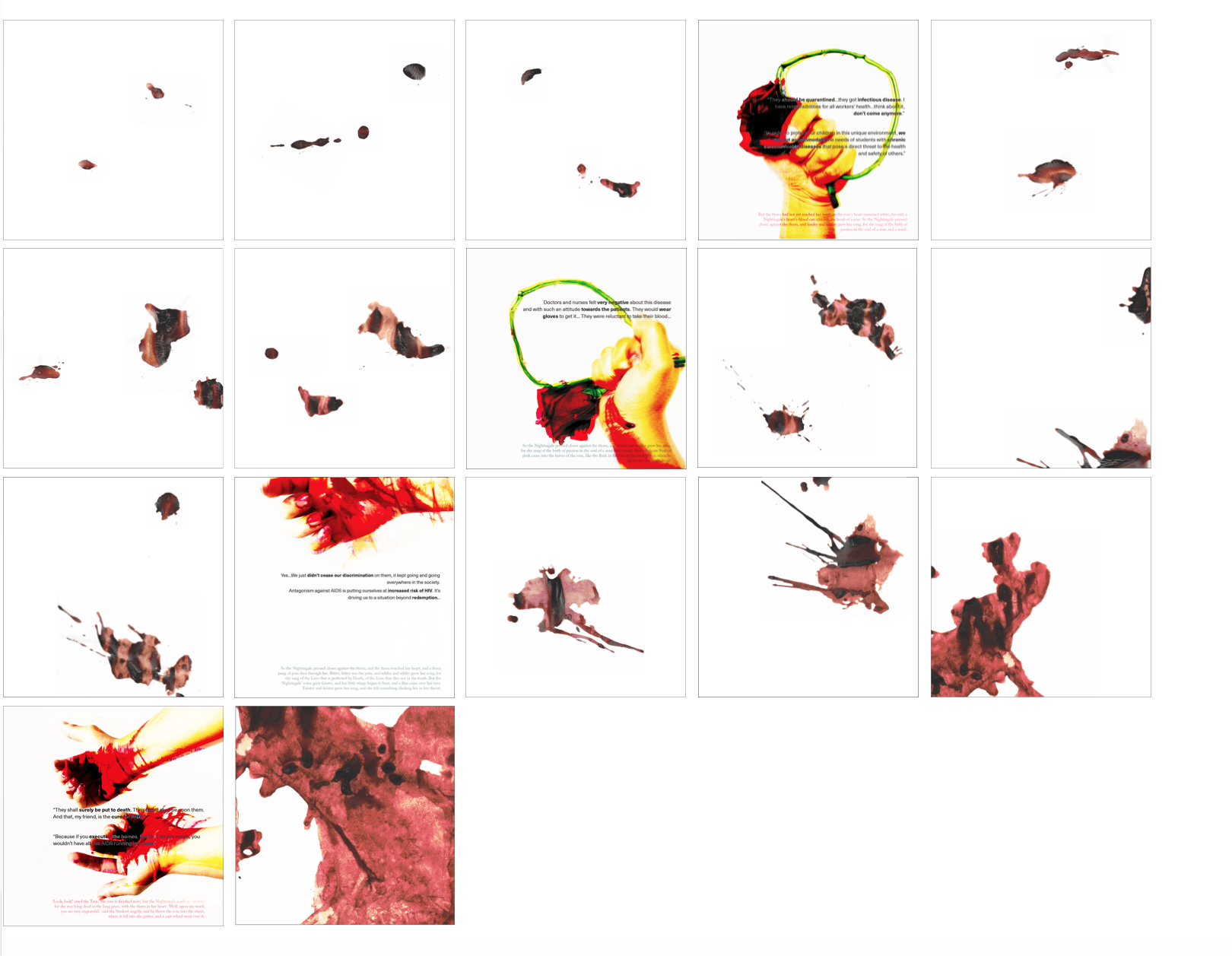Recognition:
Creative Quarterly 51: Graphic Design Winner.
International Design Awards 2018: Bronze Award Winner
Creative Quarterly 51: Graphic Design Winner.
International Design Awards 2018: Bronze Award Winner
This book was designed to speak for those AIDS patients who suffered from the stigma around them. I wove the well-known fairytale The Nightingale and the Rose with the discrimination issue on AIDS patients.The Nightingale and the Rose ended up with a significant finale that the nightingale devoted her life (through using her blood) to dye a rose into crimson for the boy who dedicated the rose to a girl yet ultimately he got rejected.
In modern context, many of us have become the martyrs of the blindness that AIDS patients should be stigmatized. The sure thing is that we suffered from the backfire of the discrimination, the isolation, and the stigma that we put on those vulnerable AIDS positives. The book questions such discrimination and harbingers the outcome that all of us will be facing.
Each page is embedded with actual and printed rose thorns, viewers would be tempted to experience a quick prick while reading the content collected from the confessions of AIDS patients. Real blood is scanned and printed on each page to intensify the reading experience.
In modern context, many of us have become the martyrs of the blindness that AIDS patients should be stigmatized. The sure thing is that we suffered from the backfire of the discrimination, the isolation, and the stigma that we put on those vulnerable AIDS positives. The book questions such discrimination and harbingers the outcome that all of us will be facing.
Each page is embedded with actual and printed rose thorns, viewers would be tempted to experience a quick prick while reading the content collected from the confessions of AIDS patients. Real blood is scanned and printed on each page to intensify the reading experience.






The narrative in the book is created from general people’s confession as well as that of the AIDS positives. The misunderstanding between AIDS patients and general people consequently yields cumulative mutual retaliations that have been recorded and indicated by the visual crescendo in the book—the increasing bleeding amount from blood spots to splashes.
Hands and roses have been adopted as a visual mataphor of general people’s being backfired from the misunderstanding, whilst blood stains are representatives of AIDS positives’ sufferings. Both mataphors follow the visual crescendo as follows.
Hands and roses have been adopted as a visual mataphor of general people’s being backfired from the misunderstanding, whilst blood stains are representatives of AIDS positives’ sufferings. Both mataphors follow the visual crescendo as follows.
Visual crescendo & Highlights




